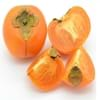Health Benefits
Cancer prevention, Heart care, Improves eye vision, Prevents diabetes, Reduces stress
Cancer prevention, Natural detoxification, Osteoporosis prevention, Protection from chronic disease
General Benefits
Boosts immune system, Cures cough, Cures fever, Digestive aid, Eye care, Helps in weight loss
Boosts immune system, Controls blood pressure, Digestive aid, Improves eye vision, Maintains healthy cholesterol level
Skin Benefits
Anti-aging benefits, Hydrates skin, Skin rejuvenation, Treatment of skin diseases
Brightens and lightens complexion, Reduces wrinkles, Skin cleansing, Treatment of dark spots
Hair Benefits
Good conditioner, Prevents hair loss, Protects hair
Acts as moisturizer, Good conditioner, Protects hair, Regulates hair growth, Rejuvenates scalp, Remedy for split ends, Shiny hair, Softening mask
Allergy Symptoms
Abdominal pains, Anaphylaxis, Breathing difficulty, Diarrhea, Dizziness, Hives, Itching of mouth, Nasal congestion, Nausea, Vomiting
Abdominal pains, Anaphylaxis, Inflammation, Itching, Latex Allergy, Nasal congestion, Skin Rashes, Swallowing difficulties, Swelling, Upset stomach, Vomiting, Wheezing
Side Effects
Allergic reaction, Bloating, Indigestion
Allergic reaction, Hypersensitivity, Weight gain
Best Time to Eat
As a snack in the late afternoon, Don't consume at night and before bed, Eat the fresh ones, avoid mixing with any other foods, don't eat after meal., Morning time (before lunch)
Along with meal, As a snack in the late afternoon, Don't consume at night and before bed, Don't eat after meal
Vitamin B5 (Pantothenic Acid)
Vitamin C (Ascorbic Acid)
Vitamin K (Phyllochinone)
Calories in Fresh Fruit with Peel
Not Available
Calories in Fresh Fruit without Peel
Not Available
Calories in Canned Form
Not Available
Not Available
Type
Melon
Berry, Tree fruit, Tropical
Varieties
Hales Best Jumbo, Sweet 'N Early Hybrid, Hearts of Gold, Ambrosia, Athena, Honey Bun Hybrid, Fastbreak and Superstar
Bacon, Fuerte, Gwen, Hass, Lamb Hass, Pinkerton, Reed and Zutano
Inside Color
Creamy Orange
White
Taste
Juicy, Musky, Sweet
Buttery
Origin
Africa, India
Mexico, Central America
Soil Type
Sandy
Decomposed Granite, Limestone, Sandy loam, Well-aerated
Climatic Conditions
Dry, Hot
Humid, Without frosts
Facts about
- Cantaloupe is known as rock-melon in some parts of the world.
- Christopher columbus first introduced cantaloupes to north america in 1494.
- The name 'Cantaloupe' as it is cultivated in papal gardens of cantaloupes, Italy.
- The oldest living avocado tree is found in University of California and was planted in 1879.
- Avocados can be swapped for butter in Baked Goods Recipes.
- Avocado ripens more quickly with a banana or an apple around.
Top Producer
China
Mexico
Other Countries
Iran, Romania, Turkey, United States of America
Chile, China, Colombia, Dominican Republic, Indonesia, Kenya, Mexico, Peru, Rwanda, United States of America
Top Importer
United States of America
United States of America
Top Exporter
Spain
Mexico
Botanical Name
Cucumis melo var. cantalupensis
Persea Americana
Synonym
Cucumis melo var. reticulatus
Persea Gratissima
Subkingdom
Tracheobionta
Tracheobionta
Division
Magnoliophyta
Magnoliophyta
Class
Magnoliopsida
Magnoliopsida
Subclass
Dillenhidae
Magnollidae
Order
Cucurbitales
Laurales
Family
Cucurbitaceae
Lauraceae
Species
C. melo
P. Americana
Generic Group
Gourd
Laurel
Compare Cantaloupe and Avocado
It is important compare Cantaloupe and Avocado as both the fruits have a different nutritional value. Their comparison can be done on the basis of their vitamin and mineral content, calories, benefits as well as characteristics, making it easier for us to choose the best fruit for our diet. Their general health benefits are as follows:
Cantaloupe Benefits: boosts immune system, cures cough, cures fever, digestive aid, eye care and helps in weight loss.
Avocado Benefits: boosts immune system, controls blood pressure, digestive aid, improves eye vision and maintains healthy cholesterol level.
Fruits are also used as a remedy for various hair problems. The hair benefits of Cantaloupe are: good conditioner, prevents hair loss and protects hair and hair benefits of Avocado are: acts as moisturizer, good conditioner, protects hair, regulates hair growth, rejuvenates scalp, remedy for split ends, shiny hair and softening mask. Some fruits are known to cause allergic reactions. The allergy symptoms of first fruit are: abdominal pains, anaphylaxis, breathing difficulty, diarrhea, dizziness, hives, itching of mouth, nasal congestion, nausea and vomiting and the symptoms of second fruit are: abdominal pains, anaphylaxis, inflammation, itching, latex allergy, nasal congestion, skin rashes, swallowing difficulties, swelling, upset stomach, vomiting and wheezing. Get sorted Cantaloupe vs Avocado comparison with the help of fruit comparison tool by fruitvs.com.









